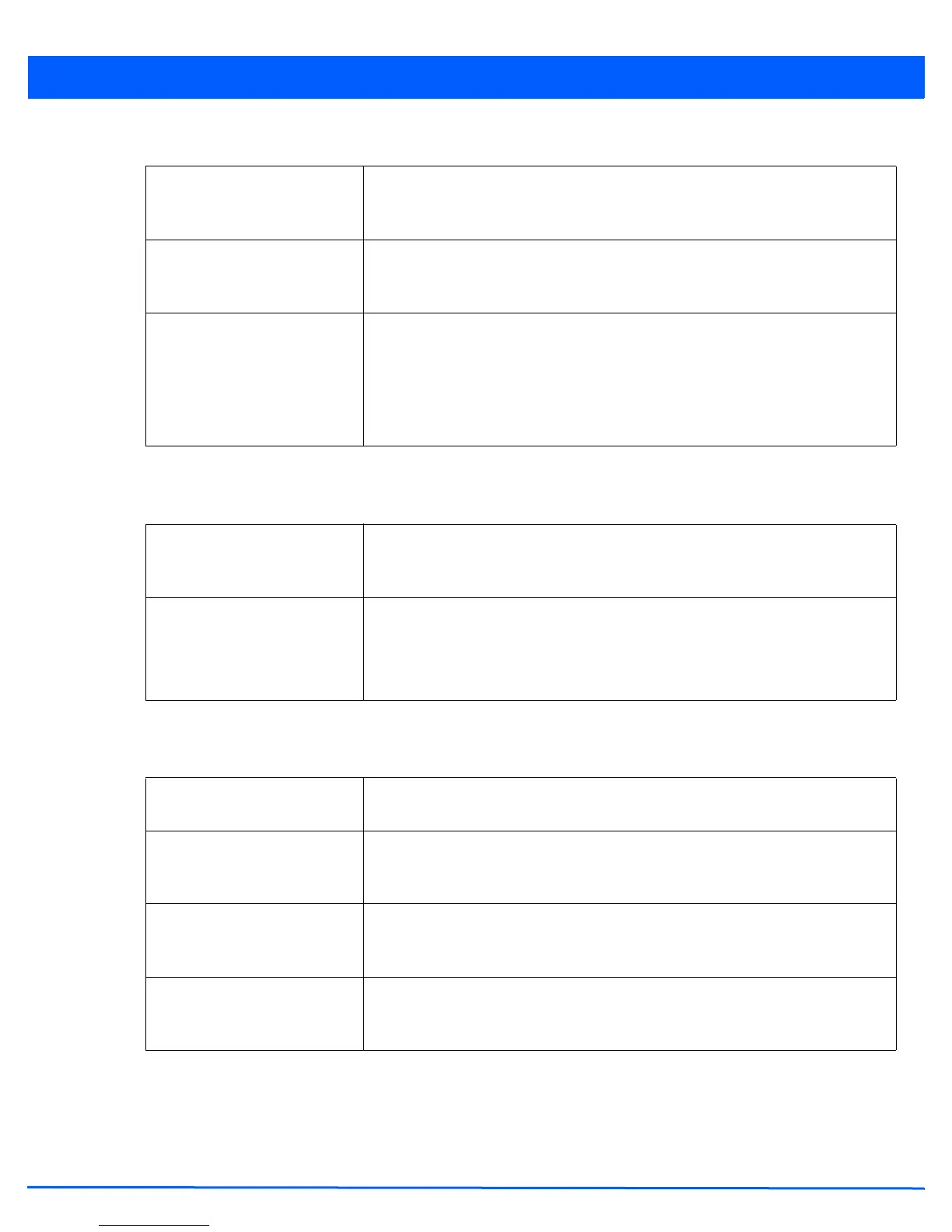Management Access 10 - 11
3. Enable or disable SNMPv2 and SNMPv3.
4. Set the SNMP v1/v2 Community String configuration. Use the + Add Row function as needed to add additional SNMP
v1/2 community strings, or select an existing community string’s radio button and select the Delete icon to remove it.
5. Set the SNMPv3 Users configuration. Use the + Add Row function as needed to add additional SNMP v3 user
configurations, or select a SNMP user’s radio button and select the Delete icon to remove the user.
6. Select OK to update the SNMP configuration. Select Reset to revert to the last saved configuration.
Enable SNMPv1 Select the check box to enable SNMPv1 support. SNMPv1 provides device
management using a hierarchical set of variables. SNMPv1 uses Get, GetNext, and
Set operations for data management. SNMPv1 is enabled by default.
Enable SNMPv2 Select the check box to enable SNMPv2 support. SNMPv2 provides device
management using a hierarchical set of variables. SNMPv2 uses Get, GetNext, and
Set operations for data management. SNMPv2 is enabled by default.
Enable SNMPv3 Select the check box to enable SNMPv3 support. SNMPv3 adds security and remote
configuration capabilities to previous versions. The SNMPv3 architecture introduces
the User-based Security Model (USM) for message security and the View-based
Access Control Model (VACM) for access control. The architecture supports the
concurrent use of different security, access control and message processing
techniques. SNMPv3 is enabled by default.
Community Define a public or private community designation. By default, SNMPv2 community
strings on most devices are set to public for the read-only community string and
private for the read-write community string.
Access Control Set the access permission for each community string used by devices to retrieve or
modify information. The available options include:
• Read Only -Allows a remote device to retrieve information
• Read-Write - Allows a remote device to modify settings
User Name Use the drop-down menu to define a user name of either snmpmanager,
snmpoperator or snmptrap.
Authentication Displays the authentication scheme used with the listed SNMPv3 user. The listed
authentication scheme ensures only trusted and authorized users and devices are
permitted access.
Encryption Displays the encryption scheme used with the listed SNMPv3 user. The listed
encryption scheme ensures data is protected when forwarded over insecure
interfaces like HTTP.
Password Provide the user’s password in the field provided. Select the Show radio button to
display the actual character string used in the password. Leaving the radio button
unselected protects the password and displays each character as “*”.

